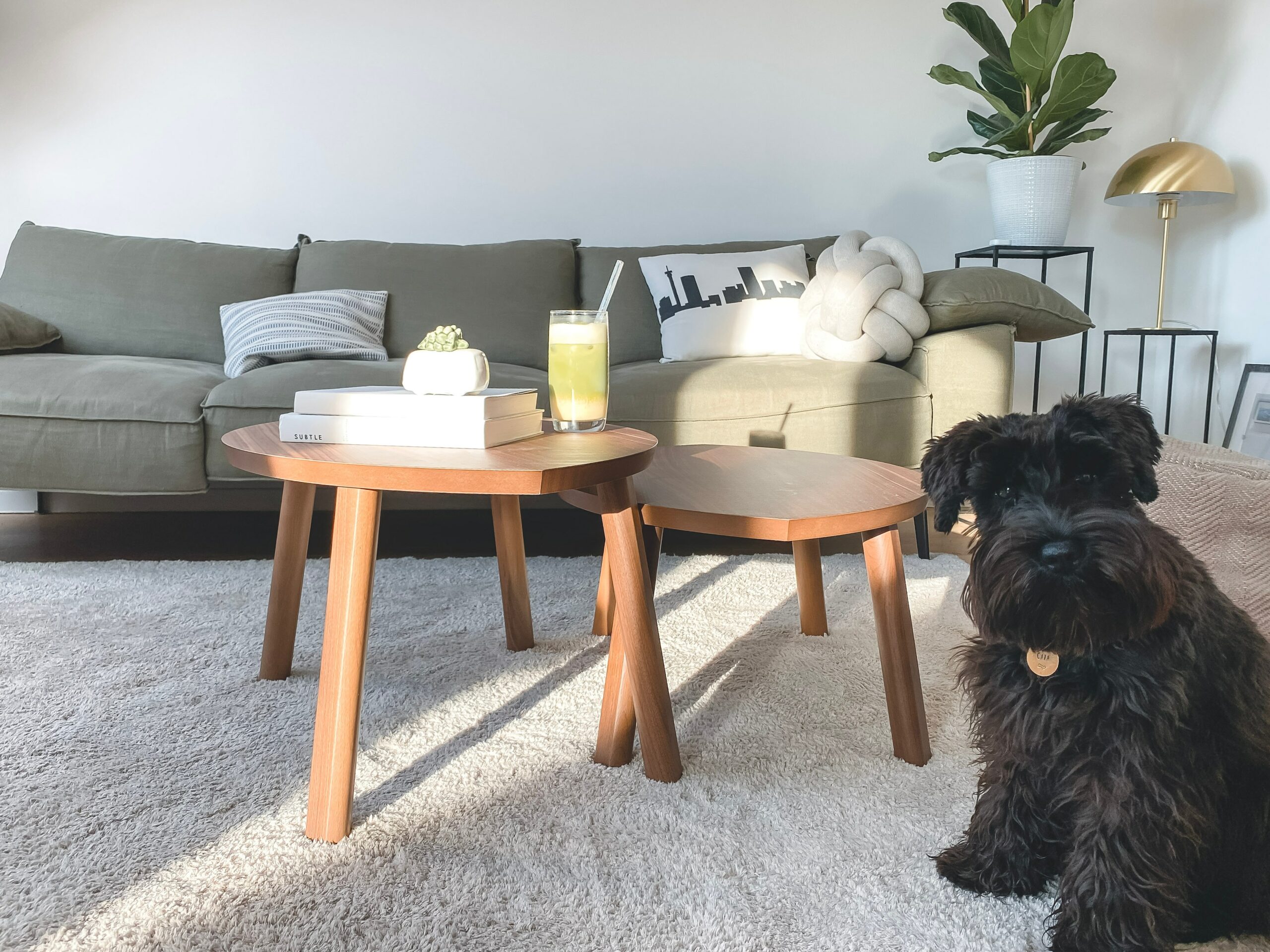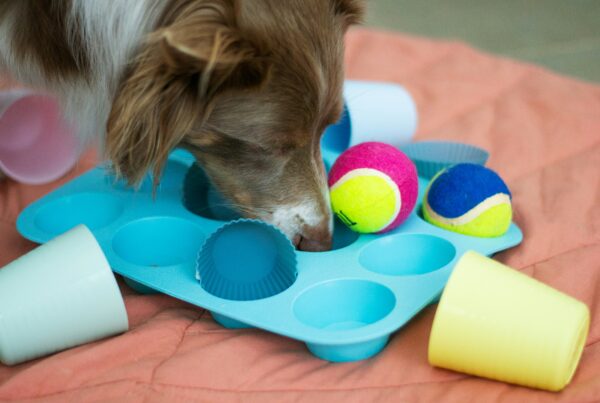Enzyme cleaners are great for removing pet stains on carpet and getting rid of the odors that come with it. They work by breaking down organic matter, such as urine, poop, dander, dirt and other smells that animals in the home can create. If you want to know how to remove pet odor from carpet using an enzyme cleaner, read our tips and determine the best enzyme cleaner for your home.
What is an Enzyme Cleaner?
An enzyme cleaner is a safe, natural way for how to remove pet stains on carpet. Enzymes are organic and break down the urine or poop odor so it’s gone from your home permanently. Some cleaners use enzymes in their formulas while others make a powdered form that you can sprinkle over the stain before vacuuming up later.
Why Are Enzyme Cleaners More Useful For Pet Odors?
 The enzymes are specifically formulated to remove pet odors and stains. They work by breaking down the organic materials that cause bad smells so they’re eliminated from your home for good. Most cleaners use a combination of cleaning agents, detergents, solvents, bleach or ammonia which can be harsh on certain surfaces like carpet or hardwood flooring.
The enzymes are specifically formulated to remove pet odors and stains. They work by breaking down the organic materials that cause bad smells so they’re eliminated from your home for good. Most cleaners use a combination of cleaning agents, detergents, solvents, bleach or ammonia which can be harsh on certain surfaces like carpet or hardwood flooring.
Additionally, enzyme cleaners can prevent your pet from continually having potty accidents in the same spot. Because the enzymes work to remove the odor completely, your cat or dog won’t feel the need to have accidents in the same area over and over.
How Do Enzyme Cleaners Work to Remove Pet Stains?
Not only do enzyme cleaners work to remove bad odors, they also remove stains from your carpet. They use a natural cleaning agent that mimics how our own enzymes work in removing dirt and odors by breaking down organic matter without harsh chemicals. Enzymes do this naturally as they digest food, so it’s possible for these “friendly” bacteria-based detergents to get to work.
The first step to removing pet stains is prevention, and enzyme cleaners can help with that too! When it comes to prevention, use an enzyme cleaner to help prevent new stains from occurring. There are many carpet cleaners that have enzymes built right in, or you can buy an enzyme cleaner separately.
A common misconception is that enzyme cleaners only work for urine stains in carpeting but this isn’t true. Enzyme cleaners also work on poop stains, vomit, and other organic matter.
How Do I Use An Enzyme Cleaner?
To remove the stain (or smell) from carpeting, first blot up as much of the liquid as you can with a dry paper towel or rag. Next, use an enzyme cleaner on spots that are still visible; let it sit for about five minutes before applying pressure. Add more cleaner if needed. Make sure to blot and not rub, and let the enzyme cleaner do its job. If you can still see a stain or smell of pet odor after removing as much liquid as possible with paper towels and letting it sit for five minutes, then you might need to use your vacuum cleaner’s hose attachment before applying more enzyme cleaner.
Remember, you should always test your enzyme cleaner first on a small patch of carpet before you use it on a larger area.
For pet odor removal, you can also try using your vacuum cleaner to remove as much of the liquid and hair from the carpet before applying enzyme cleaner. Vacuum cleaners with powerful suction that will pull up most loose items in its path and allow for easier smell removal.
Finally, remove the remaining enzymes from your carpet’s surface: use a wet vacuum on areas where you applied an enzyme cleaner, or rinse them with water and blot up any excess moisture so that they dry as quickly as possible.
What Can Happen If I Leave a Pet Stain in My Carpet for Too Long?
 Stains that have been left for more than a day or two can be more difficult to remove. If this is the case, then it’s better to call in a professional carpet cleaner or hire an individual with the proper tools and training for this type of work.
Stains that have been left for more than a day or two can be more difficult to remove. If this is the case, then it’s better to call in a professional carpet cleaner or hire an individual with the proper tools and training for this type of work.
What Happens If I Mix Enzyme Cleaners?
Enzyme cleaners should never be mixed together as they can counteract each other, making them less effective on stains. Find an enzyme cleaner that you like and use it as directed.
What Kinds of Pet Stains and Odors Can Enzyme Cleaners Be Used On?
All kinds! Cats and dogs produce a lot of different smells depending on how old they are, how often they’re bathed, what type of foods and treats they eat, as well as if they have any underlying health conditions that cause them to go potty on the carpet. Regular enzyme cleaners can be used with no problem.
Can Enzyme Cleaners Be Used to Help With Potty Training?
Enzyme cleaners can also be used to help with potty training. When dogs or cats have accidents on the carpet, removing the odor completely can help prevent them from “marking” that area in the future. Enzyme cleaners can be sprayed in the area where an accident occurred, and then a carpet cleaner should be used to clean the carpet. The enzyme product will neutralize any odors that are left behind while also leaving it smelling fresh. Dogs and cats are likely to urinate or poop in the same spots, so removing the smell completely will help train them.
What Are the Best Enzyme Cleaners for Pet Stain Removal?

There are many enzyme cleaners available for pet stain and odor removal. Some common ones include:
- Nature’s Miracle Enzyme Cleaner
- Urine Off Pet Stain Remover
- Rocco & Roxie Enzymatic Cleaner for Pet Urine Stain & Odor Eliminator
When looking for an enzyme cleaner, consumers should consider how potent the enzymes are and how long they last. Some cleaners have a strong fragrance that can be overwhelming to some people while others have no scent at all. If you think you’ll find yourself using it often, it’s best to purchase a cleaner that is easy on the nose.
Don’t Let Pet Accidents Ruin Your Carpet with Stains and Odors
Pet stains and odors can be overwhelming when you are dealing with them on a frequent basis. Whether you’re potty training, renting a house that needs to be upkept, or are just plain done with stains, an enzyme cleaner is the way to go. It breaks down the smelly enzymes as well as the stains to leave you with carpet that is good as new.
photo credit:
https://unsplash.com/photos/11HgK_P8uW0
https://unsplash.com/photos/G_QU9JNDnN0
https://unsplash.com/photos/QxfeKe8KilM
https://unsplash.com/photos/88irRymoAcg
Author’s Bio:
David Cruz has been a freelance writer for more than five years. He has been a dog lover all his life, but currently owns a Samoyed puppy as well as a nine year old cat. David covers all sorts of pet-related topics ranging from pet stains to best anti-tick medication.
Love our content? Share it with a friend or link it to social media. Like short clips of cute household pets? Training tips? Follow us on instagram @nydognanny or on YouTube at nydognanny. Have some news you needs to get to dog and cat parents stat? Email info@newyorkdognanny.com with your article pitch.




